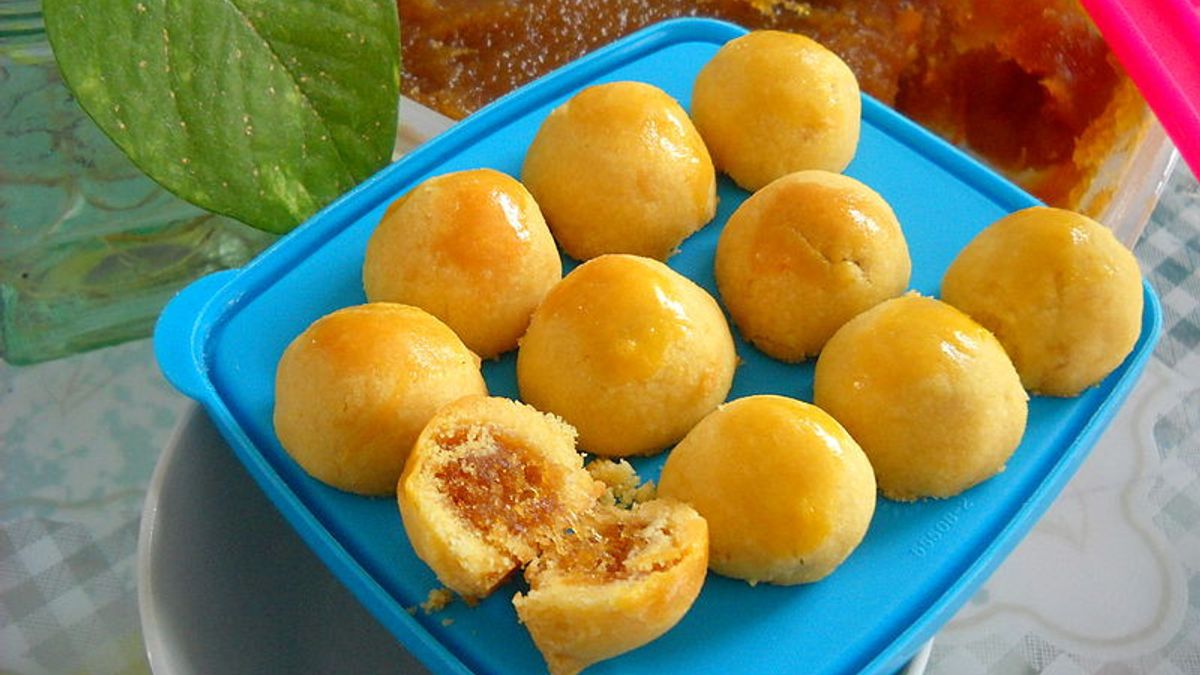JAKARTA - Dutch colonialism brought great influence in all fields. The culinary field, for example. Much of the Dutch cuisine was adopted by the natives. Vice versa. The fusion of culinary culture is an indirect manifestation of the closeness of the two countries.
The most obvious embodiment is the nastar cake. The cookie was popularized by the Dutch. They serve nastar cake for big days: easter and christmas. The Bumiputras also served it on a special day, Lebaran Day.
The Dutch decision to monopolize the spice trade route in the archipelago is final. They also declared a desire to build a colony. Jayakarta was conquered in 1619. On the ruins of Jayakarta, the Dutch trading airline VOC built Batavia.
The Dutch then made Batavia into a settlement like the big cities in Europe. After that, Belana tried to bring in Europeans. However, those who came were dominated by men. While many women are reluctant to go to the archipelago. Long distance is the reason. The problem then paved the way for Dutch officials and soldiers to marry wives from the natives.

The marriage in fact produces a variety of cultural products. From buildings, to music, to food. Many of the Dutch began to like the food processed by the bumiputras. Vice versa. During the colonial rule of the Dutch East Indies, especially. In fact, not infrequently the two flavors of food are combined into one.
Every day, this combination of food adorns the dining tables of the Dutch and the natives. The new taste is much favored by travelers from abroad. Even the dish was often present in luxury hotels of the Dutch East Indies. Indistche rijsttafel, his name.
“In the Netherlands until now, there are many restaurants that provide various types of Indis Tempo Doeloe food (menus) by putting up a sign that reads: Indische Restaurant. Many Dutch families, especially descendants who have lived or come from Indonesia, serve the Indistche rijsttafel menu. This dish consists of soto rice, fried rice, gado-gado, rames rice, spring rolls, and so on.”
“Meanwhile, in Indonesia, the Indies, including Javanese priyayi, serve family meals with mixed European and Javanese utensils and menus. For example, beefstuk, resoulles, and soup. The arrangement of the tableware on the dining table is not the same as in the Netherlands,” said Djoko Soekiman in the book Indies Culture: From the Company to the Revolution (2011).
History of NastarDishes that are the result of a blend of Indonesian-Dutch cultures are not only present in heavy meals. Nastar cake, for example. There is a touch of Portuguese settlers in the presence of nastar in the archipelago. They played a major role in bringing pineapple seedlings from their colonies (South America) to Asia.
Processed pineapple has also become popular in Asia. Nusantara especially. The Portuguese produced many new recipes for pineapple processing. The presence of pineapples is the reason why the Portuguese often make a pineapple pie.
The pineapple pie, which became a favorite of the Portuguese, began to be enjoyed by the Dutch. however, the pineapple pie didn't last long after being cooked. While the Dutch wanted the cake to last a long time. The Dutch began to tactics. Finally, the idea came up to create ananastaart. Ananas in Dutch means pineapple, tart means cake.

Nastar cakes are also served by the Dutch, not just any. Because, the cakes are consumed on special days such as Easter and Christmas. The natives did not want to lose. They also helped perpetuate the presentation of nastar cakes for the big day. Eid al-Fitr, for example. This cake is a favorite during Eid all over the country. Because of its popularity, nastar is never absent from filling the guest table on Lebaran Day.
“So the Portuguese cook by adding pineapple slices to their curries, leading to a sweet and sour fish curry called sweet and sour fish. The Portuguese then started to bake cakes with the mainstay of pineapple pie and it turned out to be popular.”
“Today, such pies are available in various flavors of strawberry, raspberry, but pineapple is the best. The Dutch used a scissor-like mold to produce the same cake but smaller. The Javanese (now: Indonesia) call it Nastar Cake," said Vincent Gabriel in the book Success In the Peranakan Food Business (2015).
The English, Chinese, Japanese, Arabic, and French versions are automatically generated by the AI. So there may still be inaccuracies in translating, please always see Indonesian as our main language. (system supported by DigitalSiber.id)










